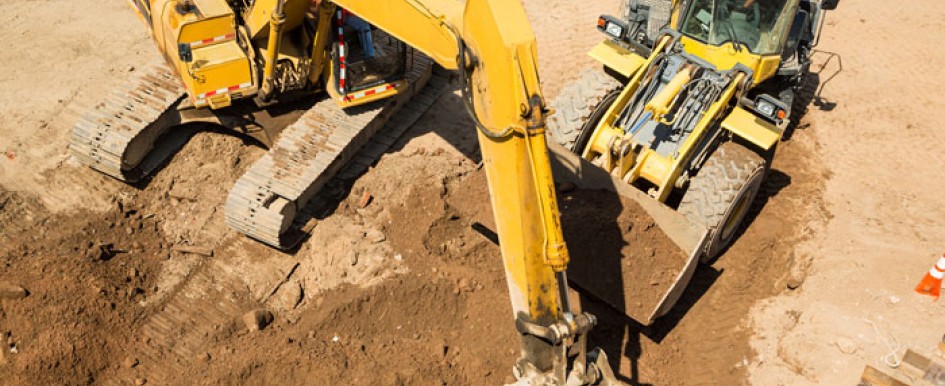
In May, the American Rental Association (ARA) launched ARA Rentalytics, a new subscription service available to ARA members that provides exclusive market intelligence for the equipment and event rental industry. The service offers economic forecasts and analysis, as well as national, state and local data that subscribers can customize to meet their information needs.
The first economic forecast and analysis available through the new platform, formerly known as ARA Rental Market Monitor, paints a positive picture for the United States equipment and event rental industry and the nonresidential construction businesses that many ARA members serve.
Growth Projections Accelerate in Forecast
Featuring data and analysis from IHS Markit, a business information provider that compiles the data in partnership with ARA and Rental Management, the ARA Rentalytics 5-year forecast, updated in May, indicates:
- Total equipment rental revenue, which encompasses the construction/industrial, general tool/light construction and party/event segments, is projected to continue to rise consistently, moving from $52.3 billion in 2018 to $64.1 billion in 2022.
- Construction/industrial rental revenue is expected to show a 6.1-percent increase in 2018—a jump from 4.3 percent in the previous forecast released in February 2018. Segment revenue is projected to rise 5.7 percent in 2019; 5.3 percent in 2020; 4.2 percent in 2021; and 3.5 percent in 2022, reaching $43.7 billion. Construction equipment (e.g., earthmoving and access equipment, pumps and generators) is almost exclusively rented by construction companies or contractors. Earthmoving equipment includes loaders, excavators and articulated dump trucks. Access equipment includes aerial work platforms, scaffolding and telehandlers. Industrial equipment comprises a broad range of equipment used in the production or movement of goods and services.
- General tool/light construction rental revenue is anticipated to post a 2018 increase of 5.7 percent, up from 4.7 percent in February. Segment revenue is anticipated to grow 6.5 percent in 2019; 8.7 percent in 2020; 7.0 percent in 2021; and 6.5 percent in 2022 totaling $16.5 billion. The general tool segment includes items for light construction, including building renovations and additions, concrete work and landscaping and is generally rented by contractors and homeowners. Examples include small hand-held tools, yard-care equipment, jackhammers, concrete and tile saws, pressure washers, small generators, scaffolding, walk-behind trenchers and small skid steers.
“The economy is growing more broadly than anticipated,” said Scott Hazelton, managing director of IHS Markit. “Job growth remains strong, and consumer confidence continues to be high. Industrial expansion is accelerating in response to strengthening demand. Homebuilding is continuing its slow recovery. Business-fixed investments are benefitting from sustained growth in global markets, along with an improving tax and regulatory environment. As a result, we are enhancing the outlook for this year and next year significantly.”
Fiscal Stimulus Boosts Growth
ARA Rentalytics forecasts are based on economic fundamentals that drive construction business, which in turn drives the rental of construction/industrial and general tool/light construction equipment as defined by the ARA. The Tax Cuts and Jobs Act (TCJA) and the Bipartisan Budget Act of 2018 are injecting fiscal stimulus into an economy that is near full employment. Boosted by tax cuts and additional federal spending, real gross domestic product (GDP) growth is expected to pick up from 2.3 percent in 2017 to 2.7 percent in 2018; and 2.9 percent in 2019.
Tax cuts generally provide fiscal stimulus to the economy, which can lead to more investment by businesses and higher employment, increasing wages and pushing up consumer spending on goods, services and leisure activities. These trends benefit every segment of rental. The TCJA is the first major overhaul of the country’s tax code in more than 30 years, and includes the following:
- A significant reduction of the corporate tax rate for C-form corporations from 35 percent to 21 percent
- Expanded Section 179 expensing limits for small businesses
- Lower individual tax rates, impacting pass-through entities, such as S corporations and limited liability corporations (LLCs)
Tax Provisions Offer New Opportunities
Provisions in the new tax code give both rental companies and construction businesses incentives to purchase more equipment. Even if construction business owners expand their own fleets, ARA expects them to utilize more rental equipment as a way to avoid overextending themselves and taking on all the responsibilities and risks of equipment ownership.
The ARA’s Rental Penetration Index (RPI), which calculates the percentage of construction equipment owned and used by rental companies in the U.S., shows penetration of construction equipment into the rental market at 53 percent in 2017, up 20 basis points from 2016.
Since 2013, the RPI has hovered around 53 percent, showing that construction business owners and managers are depending on rentals to extend their fleets and compete for more jobs. The rental industry is on a healthy growth trajectory, and a business- and investment-friendly climate suggests that this upward momentum will continue.
